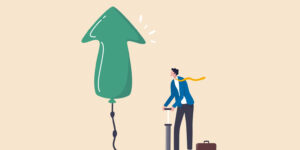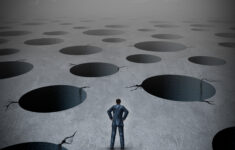Power dynamics in the workplace can influence creativity, a new study by Cornell University found.
While it is easier for those holding power positions to generate and find acceptance in their ideas, those holding positions of less power do not have it as easy.
New research shows that employees who are not in positions of power can become more creative when given time to “warm up” to a task by engaging in the creative task more than once.
“This is important because when people with more power are able to express their creative ideas more than those with less power, it leads to a rich-get-richer dynamic that reinforces or exacerbates these power differentials,” said Brian Lucas, assistant professor in the Cornell University School of Industrial and Labor Relations and co-author of “Low Power Warm-up Effect: Understanding the Effect of Power on Creativity Over Time,” forthcoming in the July issue of Journal of Experimental Social Psychology.
“Understanding ways to boost the creativity of lower-power workers can help them navigate this low-power disadvantage, generate more creative ideas and promote a more equitable workplace,” Lucas added.
Although low-power individuals are less creative than high-power individuals at the beginning of a creative task, they can eventually catch up and match high-power individuals’ creativity, as feelings of autonomy and liberation eventually help them overcome their low-power disadvantage, the researchers found.
Three studies were conducted to evaluate the power/creativity differential.
In the first study, researchers divided the creative idea generation session into two rounds, consisting of a one-minute “warm up” followed by a second round in which the participants could take as long as they wanted.
Participants were randomly assigned to a high-power condition or a low-power condition, the report stated, and feelings of power were induced with role manipulation where participants were given a leadership role and control over resources (high power) or an employee role with no control over resources (low power).
The study found that high-power individuals were more creative than low-power individuals in the warm-up round. No difference was found in creativity in the second round.
In the second study, the researchers changed the creative task and increased the number of rounds from two sessions to five, giving participants as long as they needed to complete the task.
In the final study, two different creative tasks were used across two rounds, both one-minute long.
Researchers found that consistent with the first study, high-power individuals were more creative than low-power individuals in the first round. But the creativity of low-power individuals “caught up” to the creativity of the high-power individuals after the first round.
Results of the third study demonstrated that a different creativity task can also warm-up low-power people for an unrelated creativity task.
Engaging in creative activities can have positive psychological consequences, Lucas said.
“Given the high value of creative ideas for organizations and for the careers of the employees that champion them, it is important to cultivate strategies that empower all employees to tap their creative potential,” he said. “The low-power warm-up effect suggests a simple intervention that does just this and overcomes power differentials in the workplace: when pursuing creative work, let employees warm up first.”




















 Rapid Response Effort Initiated to Respond to Fraud After Wildfires
Rapid Response Effort Initiated to Respond to Fraud After Wildfires  Leading Insurance Innovation in the AI Age (Part 1: Culture)
Leading Insurance Innovation in the AI Age (Part 1: Culture)  Future of Jobs: Claims Adjuster Among Fastest Declining Professions
Future of Jobs: Claims Adjuster Among Fastest Declining Professions  Are Cars ‘Structures’? Tallying the Damage from the Los Angeles Wildfires
Are Cars ‘Structures’? Tallying the Damage from the Los Angeles Wildfires 